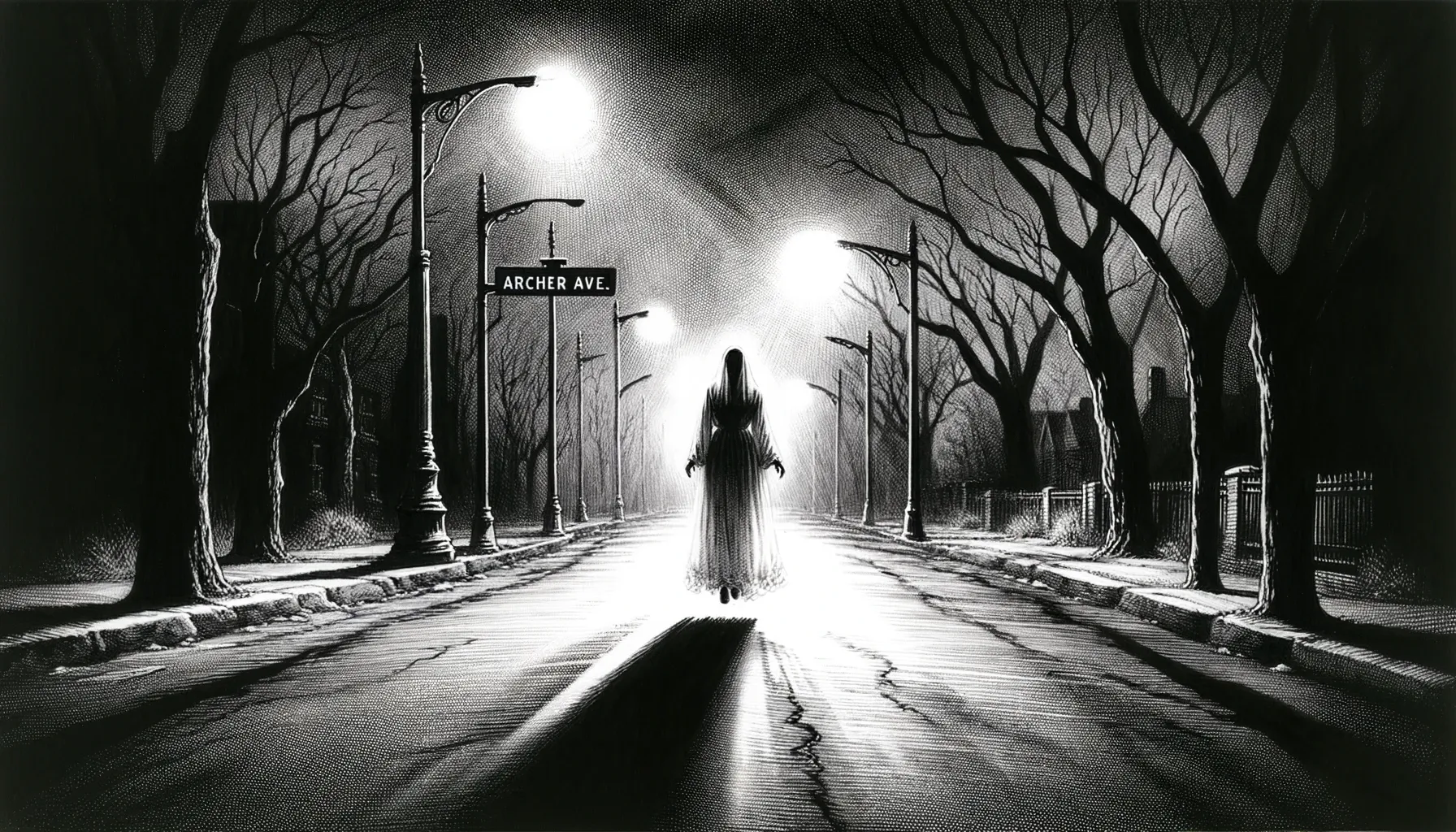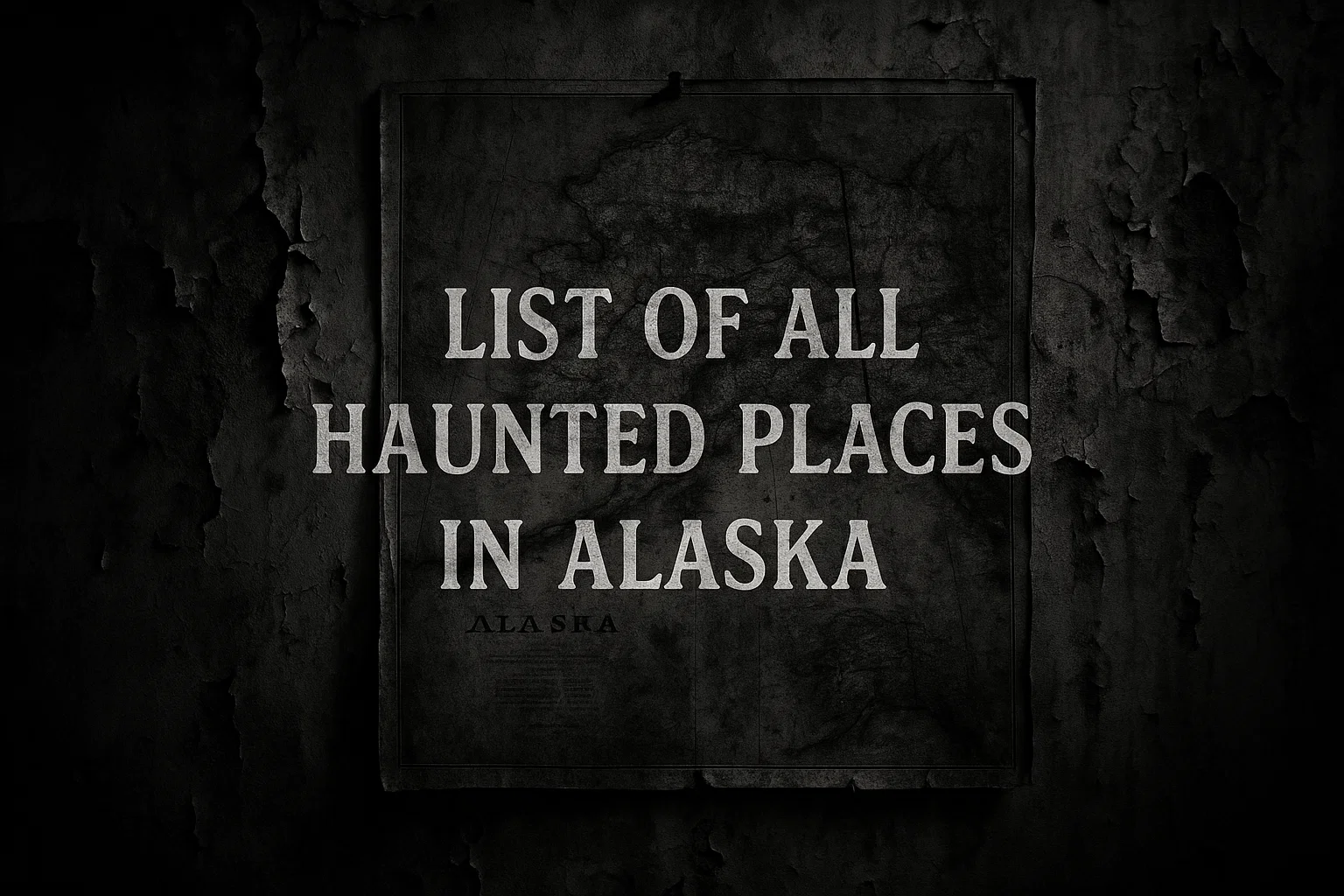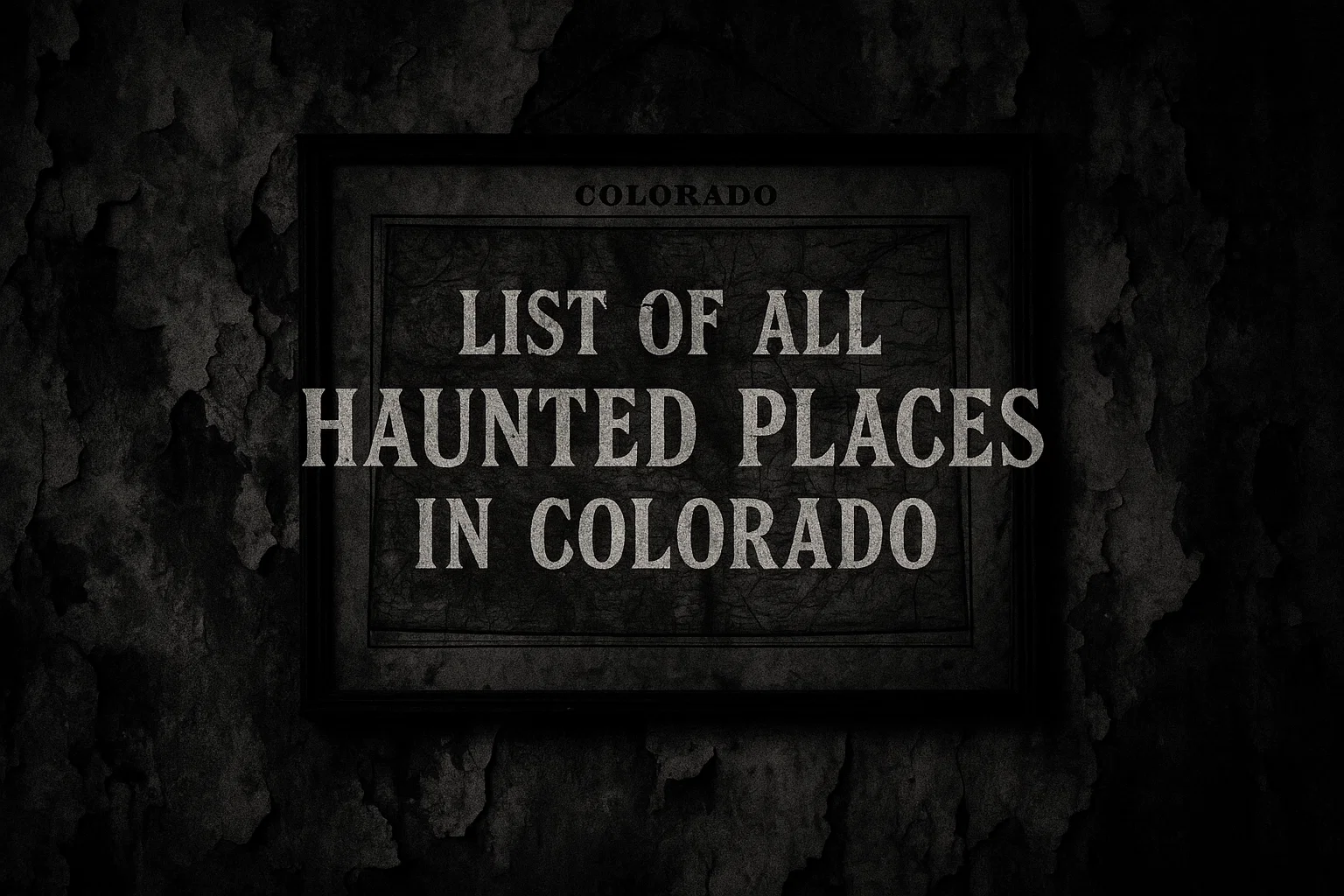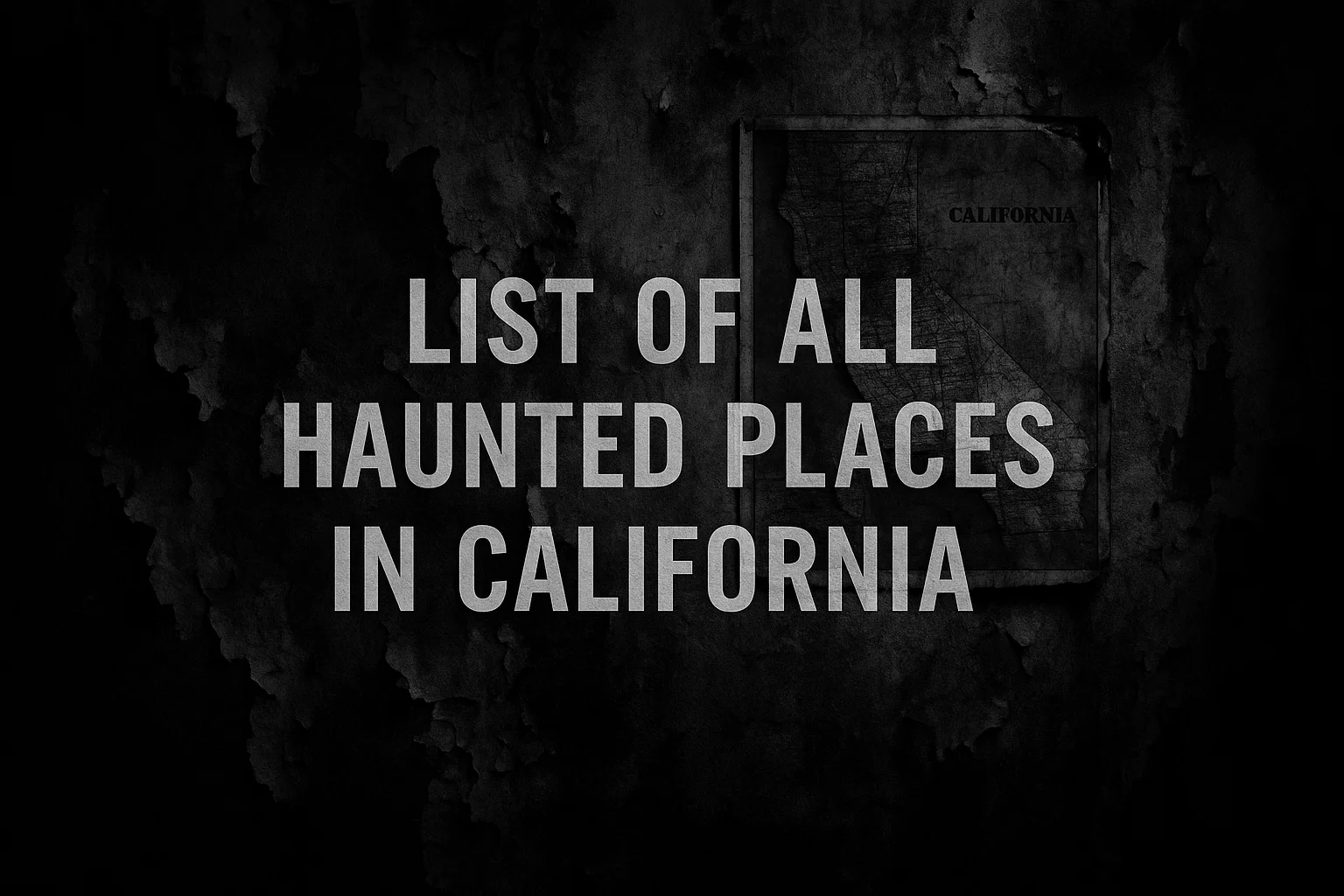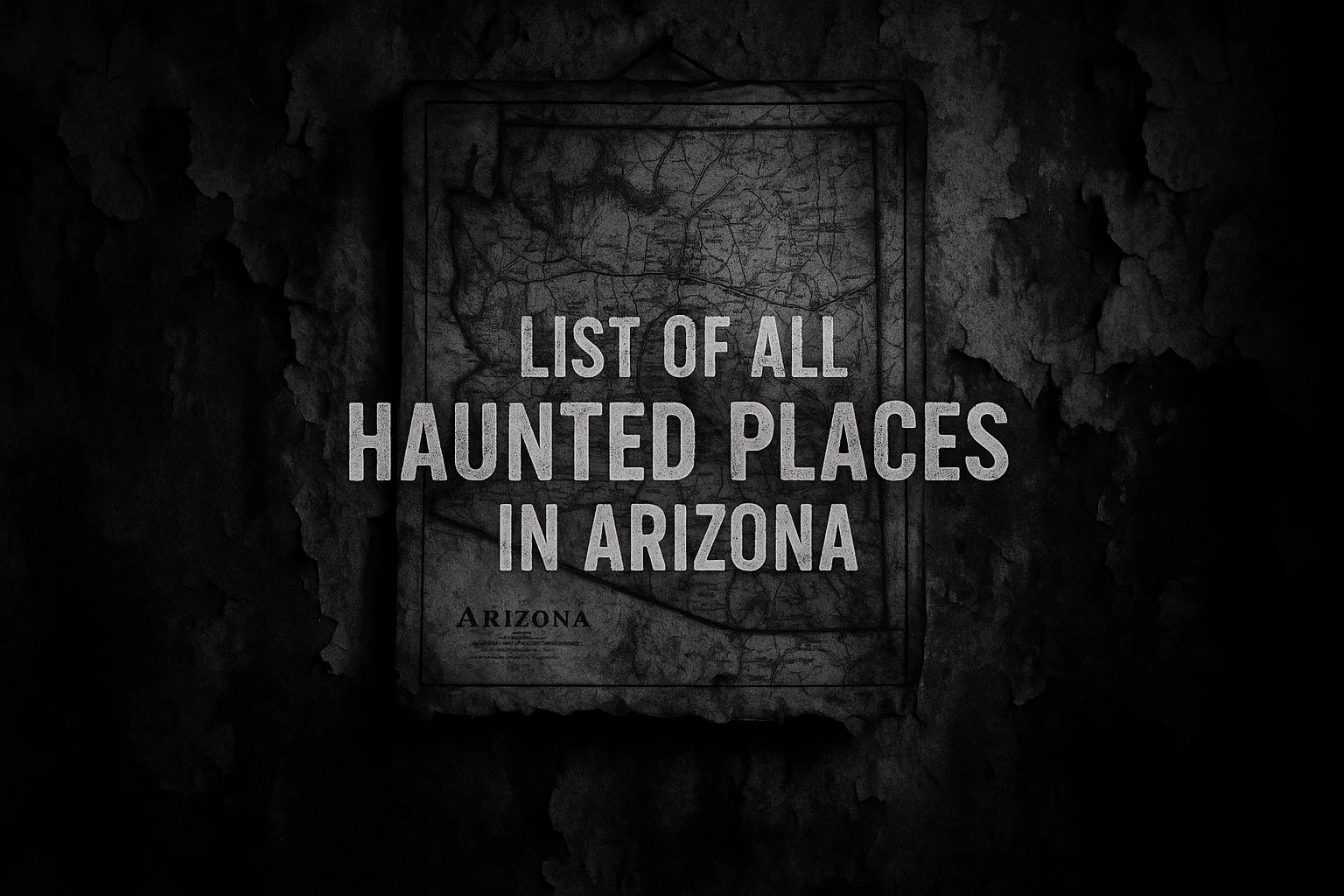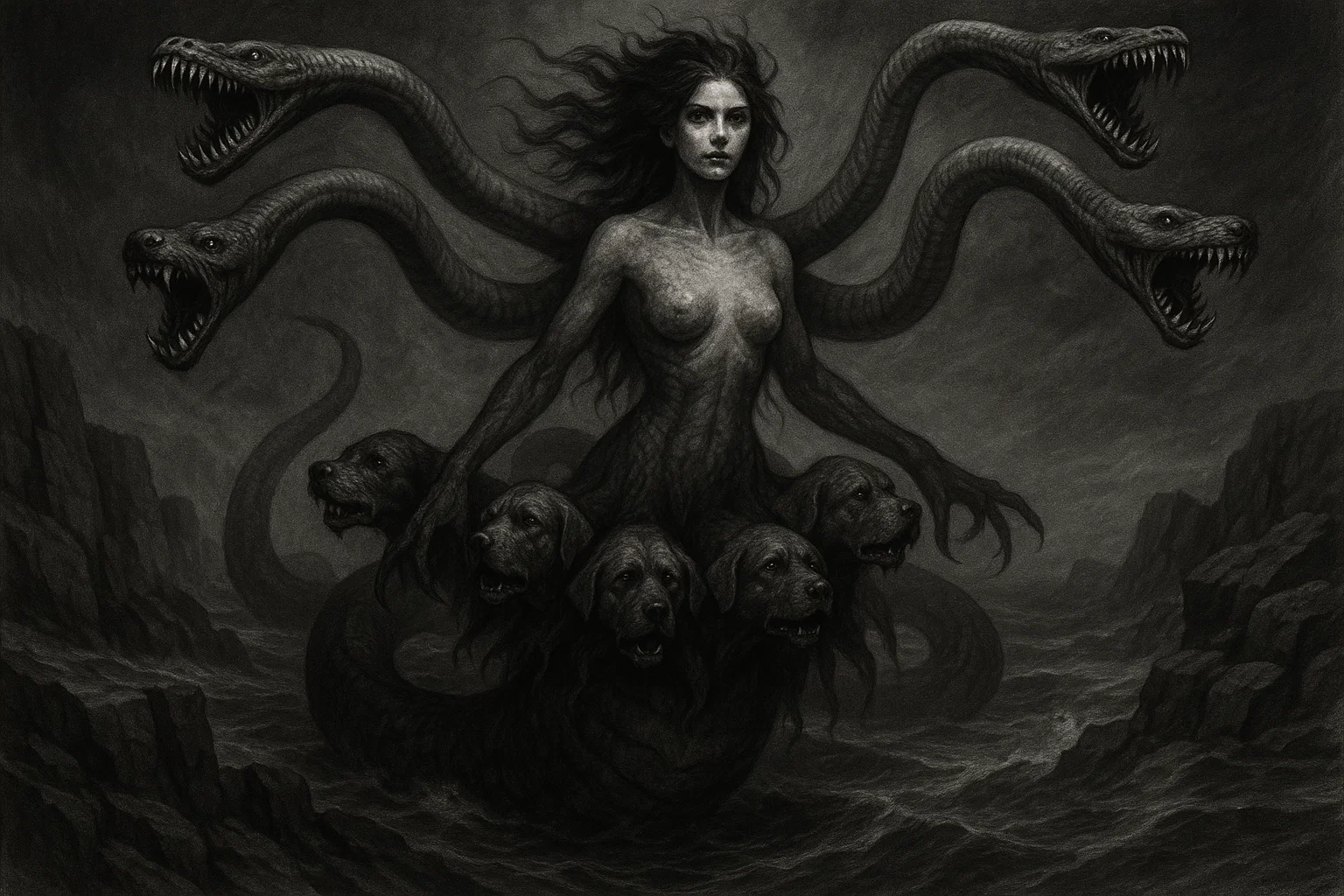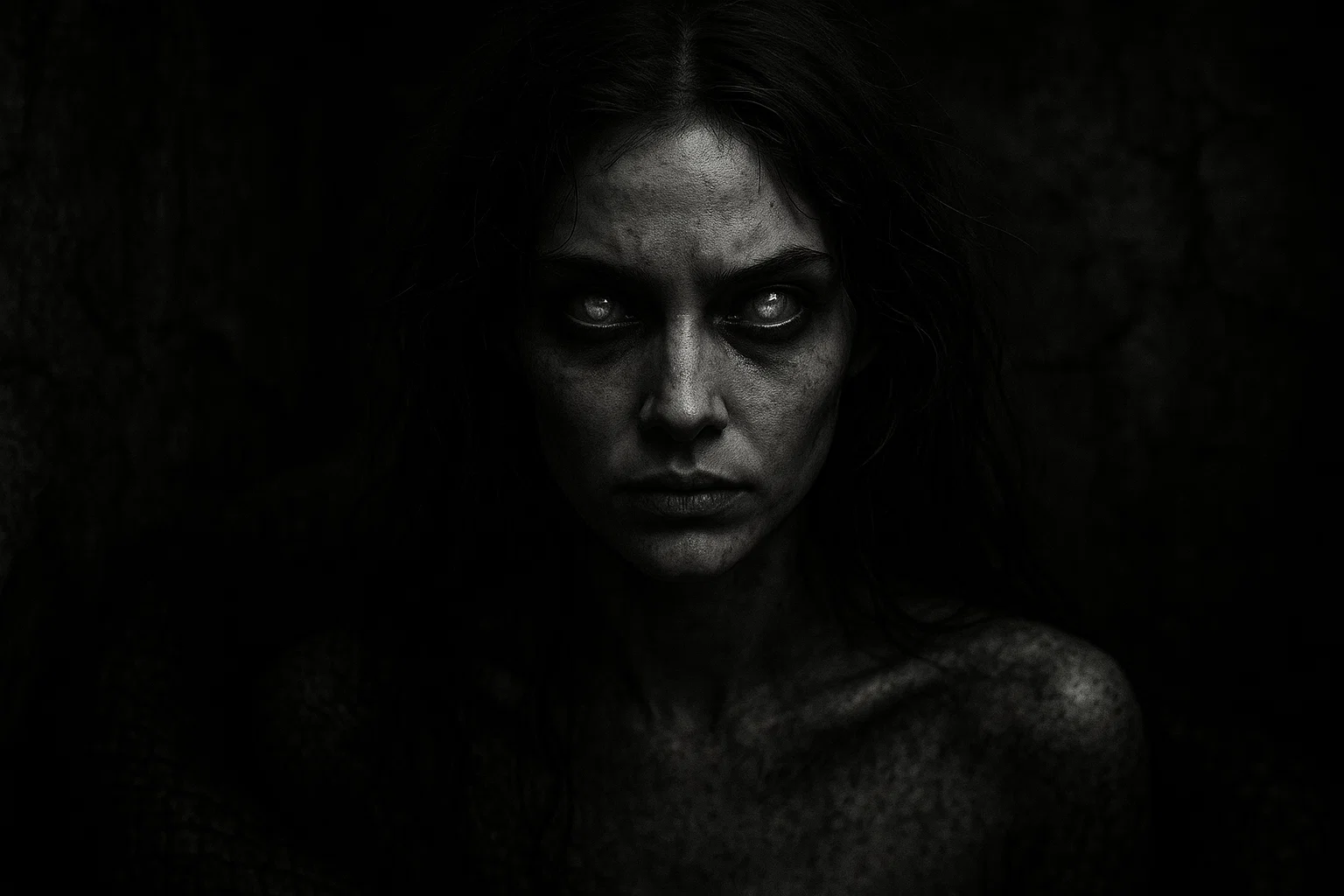Resurrection Mary is one of Chicago’s most enduring and captivating ghost stories, a tale that has haunted the city’s folklore for nearly a century. Known as the vanishing hitchhiker, this spectral figure is said to roam Archer Avenue, a historic road connecting the former Oh Henry Ballroom (later Willowbrook Ballroom) to Resurrection Cemetery in Justice, Illinois.
Dressed in a flowing white party dress, with light blonde hair and blue eyes, Mary appears to unsuspecting drivers or dance hall patrons, only to vanish mysteriously as they approach the cemetery gates.
Her story, blending elements of tragedy, mystery, and the supernatural, has fascinated locals and visitors alike, earning her the title of Chicago’s most famous ghost.
Summary
Historical Context
Archer Avenue, one of Chicago’s oldest roadways, began as a Native American trail and evolved into a vital route in the city’s southwest suburbs.
Stretching from Chicago’s Chinatown to Lockport, it connects key sites central to the Resurrection Mary legend, including Resurrection Cemetery and the former Oh Henry Ballroom. Resurrection Cemetery, consecrated in 1904, serves the Polish Catholic community and spans 397 acres, housing over 225,000 interments as of 2022.
Its Resurrection Mausoleum, built in 1969, features the world’s largest stained-glass window, depicting the History of Man’s Salvation across 2,400 panels. The cemetery’s prominence grew with the community, stimulating economic activity as visitors flocked to honor their loved ones.
The Oh Henry Ballroom, established in 1921 by Austrian immigrant John Verderbar, was a cultural hub during the 1920s and 1930s, hosting big band performances and dances.
Initially named after the Oh Henry candy bar, it was rebuilt as the Willowbrook Ballroom after a 1930 fire, with a $100,000 investment that included a soda fountain, restaurant, and flower shop. The venue thrived through the Big Band era, drawing up to 1,100 dancers nightly.
Additional dining and dancing rooms were added in the 1950s, but its popularity waned as television and cinema shifted entertainment trends. On October 28, 2016, a devastating fire gutted the ballroom, suspected to have started during roof repairs.
Despite plans announced in 2017 to rebuild with a $23 million project including a performing arts center, as of 2025, the site remains undeveloped, marked by its historical significance and the lingering legend of Resurrection Mary.
What Does Resurrection Mary Look Like?
Witnesses describe Resurrection Mary as a young woman, likely in her late teens or early twenties, exuding a timeless elegance. She wears a white ball gown, often with a thin shawl, and carries a small clutch purse.
Her light blonde hair, styled in a 1930s fashion, frames blue eyes that convey a melancholy or distant expression. Those who danced with her at venues like the Oh Henry Ballroom note her ice-cold hands, a chilling hallmark of her otherworldly presence.
Sightings typically occur at night, with Mary walking along Archer Avenue, standing near Resurrection Cemetery’s gates, or appearing at dance halls.
Some reports mention dancing shoes or a quiet demeanor, with one witness noting she was “very quiet, barely speaking” during a ride. Variations exist—some describe her gown as faded or her form as partially transparent—but her core appearance remains consistent across decades, reinforcing her status in Chicago’s paranormal lore.
Witness Descriptions
1939, Jerry Palus:
“She was a beautiful blonde girl in a white dress, maybe 21. Her hands were cold as ice when we danced, and she vanished right in front of the cemetery gates.”
1979, Cab Driver Ralph:
“She was a looker, a blond, young enough to be my daughter—21 tops. She pointed to a shack, and then she was gone, without the door ever opening.”
1980, Clare Rudnicki:
“We saw a woman in a white gown, partially transparent, with a white aura. She was there one moment, gone when we turned back.”
Early 2000s, Anonymous Cabbie:
“She wore a white gown, pale as snow. Said, ‘The snow came early this year,’ then vanished from my cab.”
These accounts highlight her ethereal presence, white attire, and sudden disappearance, cementing her as a distinct figure in ghost stories.
Possible Identities of Resurrection Mary
The identity of Resurrection Mary remains a haunting enigma, with researchers proposing several candidates based on records of young women buried in Resurrection Cemetery. The most cited theories focus on two individuals, though others have been suggested, and the lack of definitive evidence fuels ongoing debate.
Mary Bregovy (d. 1934)
Mary Bregovy, aged 21, died in a 1934 car accident in Chicago’s downtown Loop, killed in a collision on March 10. Buried in Resurrection Cemetery, her blonde hair and youthful appearance align with witness descriptions.
The accident’s urban setting, rather than Archer Avenue, poses a challenge, but her burial site and tragic death make her a strong candidate. Researchers like Ursula Bielski have noted her as a likely match, though discrepancies in location persist.
Anna “Marija” Norkus (d. 1927)
Anna “Marija” Norkus died in a 1927 car accident on Harlem Avenue, returning from the Oh Henry Ballroom. Officially 12, some records suggest she was closer to 17, possibly due to age falsification for dance hall entry.
Her burial in Resurrection Cemetery and ballroom connection make her a compelling candidate. However, her younger age raises questions about matching the mature appearance described. Bielski and others have popularized this theory, citing her direct link to the legend’s key location.
Other Possible Identities
Mary Miskowski: A rumored victim of a 1930 hit-and-run on Archer Avenue, her existence lacks historical records, suggesting a folkloric origin.
Mary Kovac (d. 1932): Died of tuberculosis at 19 and buried in Resurrection Cemetery, her non-accidental death makes her less likely.
Composite Spirit: Some propose Mary represents multiple spirits, with the cemetery identifying five women from the 1920s–1930s as potential matches.
The absence of conclusive evidence keeps Mary’s identity shrouded in mystery, with each candidate offering a partial connection to the urban legend.
Reported Sightings and Encounters
Since the 1930s, dozens of individuals have reported encounters with Resurrection Mary, primarily along Archer Avenue between the Oh Henry Ballroom and Resurrection Cemetery.
These sightings, documented by ghost hunters like Richard Crowe, who collected “three dozen substantiated reports” from 1939 to the 1990s, range from hitchhiking incidents to dance hall appearances. Below is a comprehensive table of notable sightings:
| Year | Witness | Location | Details |
|---|---|---|---|
| 1939 | Jerry Palus | Liberty Grove and Hall, Archer Avenue, Resurrection Cemetery | Met a blonde woman named Mary, danced with her, noted her cold hands, offered a ride; she vanished at the cemetery gates. Confirmed with her mother that Mary died five years prior. |
| 1973 | Anonymous | Harlow’s Nightclub, Cicero Avenue | A woman in a faded white dress danced alone; no one saw her enter or leave despite ID checks. |
| 1973 | Anonymous Cab Driver | Chet’s Melody Lounge, across from Resurrection Cemetery | Picked up a young woman who left without paying fare, vanishing near the cemetery. |
| 1976 | Multiple Drivers | Outside Resurrection Cemetery | Reported nearly striking a woman in white who disappeared; alleged handprints found on cemetery gates, later attributed to a truck accident. |
| 1978 | Multiple Drivers | Outside Resurrection Cemetery | Similar reports of a woman in white running into traffic and vanishing. |
| 1979 | Ralph (Cab Driver) | Near a shopping center, Archer Avenue | Picked up a blonde woman in a white gown who pointed to a shack and vanished without opening the door. |
| 1980 | Clare Rudnicki and Mark | Front of Resurrection Cemetery | Saw a partially transparent woman in a white gown with a white aura; she vanished when they turned back. |
| 1980 | Tony | Near Red Barrel Restaurant, Archer Avenue | Picked up a woman, jokingly said, “You look like Resurrection Mary,” and she vanished at 45 mph near the cemetery. |
| 1989 | Janet Kalal and Friend | Resurrection Cemetery | A woman in white stepped in front of their car, no impact, and disappeared. |
| Early 2000s | Anonymous Cabbie | Archer Avenue | Picked up a woman in a white gown who said, “The snow came early this year,” before vanishing. |
1939: Jerry Palus’s Encounter
In January 1939, Jerry Palus met a woman at Liberty Grove and Hall, describing her as a blonde, 21-year-old in a white dress. They danced, and he noted her cold hands and lips during a kiss. Offering her a ride, she directed him to Resurrection Cemetery, vanishing at the gates.
The next day, Palus visited her given address, where her mother confirmed Mary’s death five years earlier, likely in a car accident. This encounter, widely publicized, established the vanishing hitchhiker archetype for the legend.
1976: The Handprints Incident
In August 1976, drivers reported seeing a woman in white near Resurrection Cemetery, some claiming their cars nearly struck her. Reports emerged of handprints burned into the cemetery’s wrought iron fence, attributed to Mary.
Police found no one, but the bent bars fueled speculation. Cemetery officials later clarified the damage resulted from a maintenance truck collision, debunking the paranormal claim but not diminishing the legend’s allure.
1979: Cab Driver Ralph’s Encounter
Ralph, a cab driver, picked up a blonde woman in a white gown near a shopping center on Archer Avenue. She requested a ride, then pointed to an abandoned shack and vanished without opening the door. Ralph’s account, echoing Palus’s, underscores the consistency of Mary’s spectral behavior, reinforcing her status as a ghostly figure.
1980: Clare Rudnicki and Mark’s Sighting
Clare Rudnicki and Mark saw a woman in a white gown near Resurrection Cemetery, describing her as partially transparent with a white aura. Feeling frightened, they turned back, and she vanished. This sighting, reported to the Ghost Research Society, highlights Mary’s ethereal nature and the emotional impact on witnesses.
These encounters, spanning decades, illustrate the persistence of the Resurrection Mary legend, with consistent descriptions of her appearance and behavior fueling Chicago’s ghost stories.
Cultural Impact
Resurrection Mary has profoundly shaped Chicago’s cultural landscape, inspiring music, television, literature, and local traditions. Her story resonates as a haunting narrative, connecting generations through shared folklore.
Music
The legend has inspired several songs, each capturing its supernatural essence:
- “The Ballad of Resurrection Mary” by Guy Gilbert (1977): A psychedelic garage rock track, popular at Chet’s Melody Lounge.
- “The Ballad of Resurrection Mary” by Suburban Resistance (2022): A melodic punk rock rendition.
- “Resurrection Mary” by Ian Hunter (1996): A Bruce Springsteen-inspired song.
- “Resurrection Mary” by The Tossers (2017): A Celtic punk tribute by a Chicago band.
Television and Media
The legend gained national attention through a 1994 episode of “Unsolved Mysteries”, featuring an interview with Jerry Palus. CBS Chicago covered the story in a 1984 ghost-hunting segment at Resurrection Cemetery, further embedding Mary in popular culture. Local news and paranormal shows continue to revisit the tale, keeping it alive.
Local Traditions
Chet’s Melody Lounge: Across from Resurrection Cemetery, this tavern leaves a Bloody Mary at the bar every Sunday for Mary, a tradition drawing locals and tourists.
Chicago Hauntings Tours: Guided tours along Archer Avenue explore the legend’s key sites, offering immersive experiences for ghost hunters.
Literature
Books like Kenan Heise’s Resurrection Mary: A Ghost Story (1990), Ursula Bielski’s Chicago Haunts (1997), and Troy Taylor’s Resurrection Mary (2002) document the legend, blending historical research with paranormal accounts. These works explore sightings, identities, and the cultural significance of Chicago’s urban legends.
The legend’s cultural footprint underscores its role as a shared narrative, connecting Chicagoans to their city’s haunted past and cementing Resurrection Mary as a cultural icon.
Comparison with Other Similar Ghosts
Resurrection Mary is a quintessential vanishing hitchhiker, a folklore archetype found globally. Her story shares traits with other ghostly figures, particularly those involving young women in white who vanish mysteriously, often tied to tragic deaths.
Below are comparable figures:
- Walhalla Hitchhiker (South Carolina, USA): A ghost appearing to drivers, vanishing near a specific location, often linked to a fatal accident.
- White Lady of Balete Drive (Quezon City, Philippines): A woman in white haunting a road, associated with a tragic death, possibly a car crash or assault.
- Phantom Hitchhiker of Bedfordshire (Great Britain): A female ghost who hitches rides and disappears, tied to a historical tragedy.
- Swedish Hitchhiker (17th Century): Documented by Joen Petri Klint, a figure who vanished after being picked up, reflecting early folklore.
- Blue Bell Hill Ghost (Kent, UK): A woman in white, often seen after a 1965 car accident, who vanishes from vehicles.
| Ghost | Location | Appearance | Behavior | Similarities to Resurrection Mary |
|---|---|---|---|---|
| Walhalla Hitchhiker | South Carolina, USA | Unspecified | Appears to drivers, vanishes | Vanishes mysteriously, road-based |
| White Lady of Balete Drive | Quezon City, Philippines | Woman in white | Haunts road, linked to tragedy | White dress, tragic backstory, nocturnal |
| Phantom Hitchhiker of Bedfordshire | Bedfordshire, UK | Female, unspecified attire | Hitches rides, disappears | Vanishes from vehicles, historical |
| Swedish Hitchhiker | Sweden | Unspecified | Vanishes after pickup | Early vanishing hitchhiker archetype |
| Blue Bell Hill Ghost | Kent, UK | Woman in white | Appears post-accident, vanishes | White attire, car accident link |
These figures share white attire, female forms, and sudden disappearances, often tied to tragic deaths on roads. The white dress symbolizes purity or death, while the hitchhiking motif reflects vulnerability.
Similarities likely stem from universal fears of unresolved loss and the liminality of roads as transitional spaces, where the supernatural seems plausible. Cultural storytelling amplifies these tales, with Chicago’s urban setting shaping Mary’s legend into a modern ghost story.
Skeptical Perspectives
While many embrace the supernatural nature of Resurrection Mary, skeptics propose rational explanations for the sightings, rooted in psychology, misinterpretation, or cultural phenomena:
- Hallucinations: Grief, fatigue, or suggestion in a haunted location may induce hallucinations. Folklorist Michael Goulder (1927–2010) suggested similar group delusions in other apparition cases, applicable to Mary’s sightings during emotional or late-night contexts.
- Misinterpretations: Low-light conditions or ordinary events, like a pedestrian in white, may be mistaken for paranormal activity. Nighttime driving on Archer Avenue could amplify such errors.
- Urban Legends: The story may be a self-perpetuating urban legend, with retellings enhancing credibility. Folklorist Jan Harold Brunvand traces vanishing hitchhiker tales to the 1870s, suggesting Mary’s legend is a localized variant.
- Hoaxes: Some sightings could be pranks, though no definitive evidence supports widespread fabrication. The consistency of reports suggests genuine belief over deliberate deceit.
- Psychological Phenomena: Pareidolia (seeing patterns like figures in ambiguous settings) or expectation bias (anticipating a ghost in a known haunted area) may explain sightings. Researcher Joe Nickell, in 1994, noted optical illusions as a factor in apparition reports.
The 1976 handprints incident, initially attributed to Mary, was debunked by cemetery officials as maintenance truck damage, illustrating how mundane events fuel ghost stories. Despite these explanations, the volume and consistency of sightings maintain the legend’s allure, balancing belief and skepticism in Chicago’s folklore.
Conclusion
Resurrection Mary remains an enigmatic figure, her story a captivating blend of history, tragedy, and supernatural intrigue. Whether the spirit of Mary Bregovy, Anna Norkus, or a composite of lost souls, her legend haunts Archer Avenue and Resurrection Cemetery, drawing ghost hunters, historians, and curious visitors.
Her cultural impact, from songs and TV shows to traditions like the Bloody Mary at Chet’s Melody Lounge, underscores her enduring appeal.
As a vanishing hitchhiker, she embodies universal themes of loss and restlessness, ensuring her place in Chicago’s urban legends for generations.

